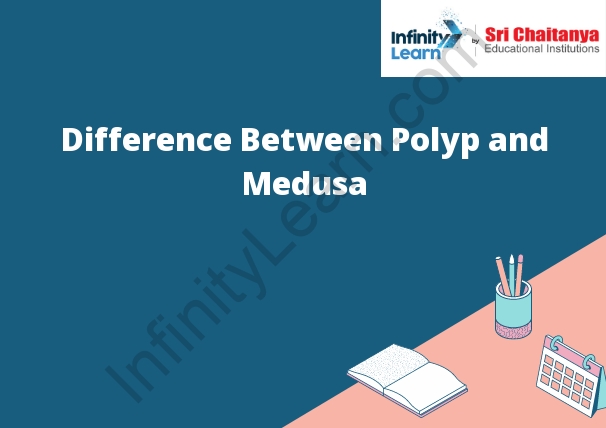Table of Contents
Difference between Polyp and Medusa:
A polyp is a sessile, cylindrical, multicellular animal that is attached to the substrate by a basal disk. The body of a polyp is divided into a cylindrical trunk and a flattened oral disc. The oral disc is surrounded by tentacles that are used to capture prey. The tentacles are also used to bring food to the mouth and to remove wastes from the body. Polyps lack a nerve cord, so they are unable to move on their own.
A medusa is a free-swimming, bell-shaped animal. The body of a medusa is divided into a central bell and a number of tentacles. The tentacles are used to capture prey. The bell is used to catch food and to propel the medusa through the water. Medusae have a nerve cord, so they are able to move on their own.

Polyp:
A polyp is a small, protruding, fleshy mass that is usually found on the inner surface of the body wall of a hollow organ such as the stomach, intestines, or bladder. Polyps are usually benign (noncancerous) and can be removed without causing any harm.
Medusa:
Medusa is a character from Greek mythology who was turned into a monster by Athena. She has a head of writhing snakes instead of hair, and anyone who looks at her will turn to stone.
Difference between Polyp and Medusa:
- A polyp is a small, tubular, cylindrical, or sac-like invertebrate animal typically found in colonies attached to a surface. Medusae are a type of polyp. Medusae are umbrella-shaped animals that have a central mouth, from which tentacles hang. They catch food particles in the water and then bring them to the mouth.
- A polyp is a small, cylindrical, bottom-dwelling marine invertebrate that has a mouth on one end and a long, pointed tail on the other. Polyps are related to coral and sea anemones. A medusa is a jellyfish-like marine invertebrate with a bell-shaped body and long, trailing tentacles. Medusas are related to jellyfish.
- Polyps and medusas have different body shapes. Polyps are small and cylindrical, while medusas are bell-shaped and have long, trailing tentacles.
- Polyps are bottom-dwellers, while medusas are free-swimmers.
- Polyps have a mouth on one end and a long, pointed tail on the other. Medusas have a mouth on the underside of their bell-shaped body.
- Polyps are related to coral and sea anemones, while medusas are related to jellyfish.
Comparison between Polyp and Medusa:
- Polyps are small, colonial animals that lack a medusa stage in their life cycle. They attach to surfaces using a stalk, and can retract their body into the stalk. Polyps are usually found in coral reefs.
- Medusas are the free-swimming, sexually reproductive form of cnidarians. They have a bell-shaped body and tentacles. Medusas are usually found in open water.
Polyp and Medusa: Major Differences:
- In a polyp, the body is composed of a series of identical modules, each of which can bud off new polyps. In contrast, a medusa is a single, free-living organism with a diffuse body and no fixed modules.
- A polyp has a small, cup-shaped body with a single mouth and a long, slender stalk. The body of a medusa is round or pear-shaped and has a number of tentacles surrounding the mouth.
- A polyp is attached to a substrate by its stalk. A medusa swims freely in the water.
- A polyp reproduces asexually by budding off new polyps. A medusa reproduces sexually by releasing eggs and sperm into the water.
- There are many differences between a polyp and a medusa. For one, a polyp is attached to the seafloor while a medusa is free-swimming. Polyps also lack the stinging tentacles that medusas have. Finally, medusas can reproduce asexually by releasing eggs and sperm into the water, while polyps can only reproduce sexually by mating with another polyp.









